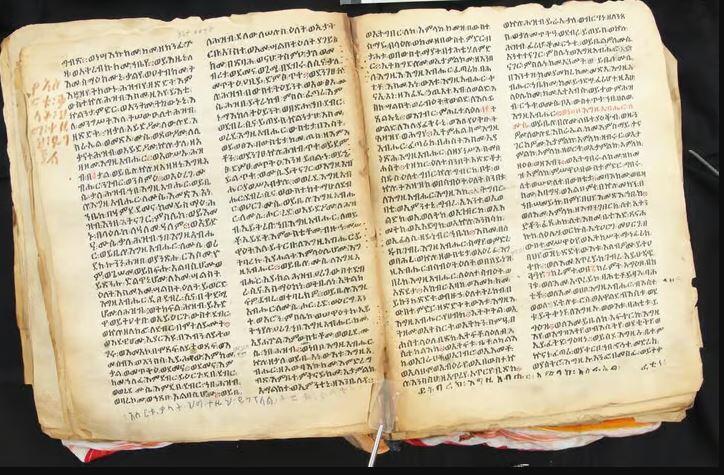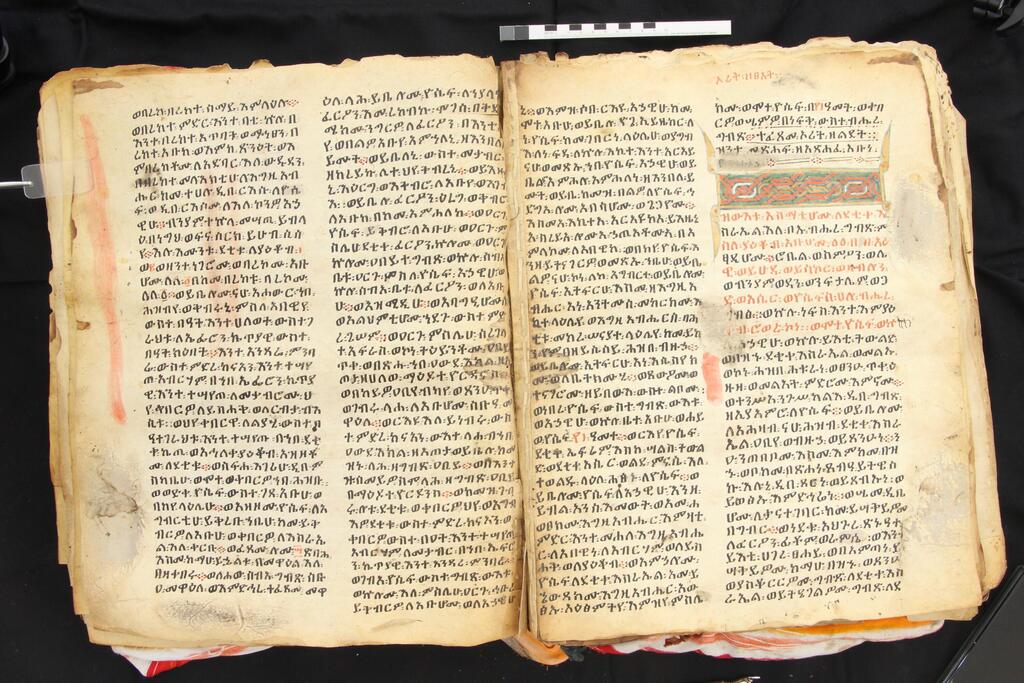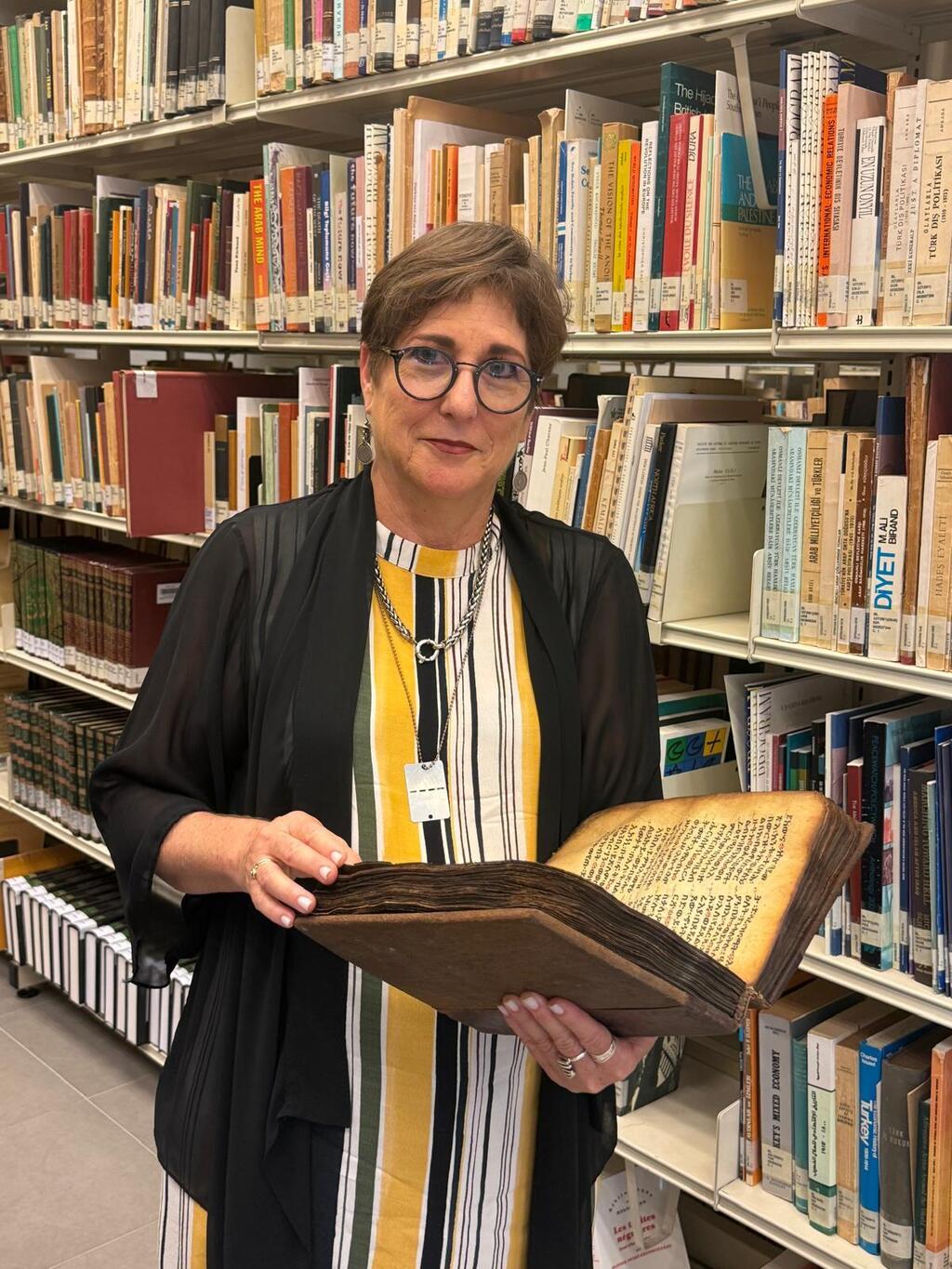Tel Aviv University researchers have identified two 15th-century manuscripts as the oldest known sacred texts of Ethiopia’s Jewish community, Beta Israel.
The discovery was made as part of a program dedicated to preserving, studying and continuing the biblical traditions of Ethiopian Jewry.
3 View gallery


Book of Exodus manuscript written in Ge'ez from the second half of the 15th century
(Photo: Ted Erho)
A recent workshop conducted in collaboration with the Ethiopian Jewish Heritage Center and the National Library of Israel documented the manuscripts and began building a digital archive of Beta Israel’s sacred texts. The books were unveiled during a festive event at the ANU Museum of the Jewish People, organized in partnership with Tel Aviv University’s Koret Center for Jewish Civilization.
“The Orit of Beta Israel includes the Five Books of Moses as well as Joshua, Judges and the Scroll of Ruth," said Prof. Dalit Rom-Shiloni of the Department of Biblical Studies.
"So far, we’ve documented four Orit scrolls—two from the 15th century—and another 13 sacred texts. All are written in Ge’ez, a liturgical language known only to the kessim (spiritual leaders), and each manuscript carries its own fascinating story. They’ve been passed down through generations, from father to son, and some were gifted to kessim by their teachers—Jewish monks who preserved and taught the sacred traditions in Ethiopia.”
Rom-Shiloni added that “the books were fiercely protected—some owners even risked their lives to bring them to Israel. Today, most are privately held by kessim and their families and are still used in Ethiopian synagogues throughout the country. Until now, they were not accessible to scholars. We’re now working to locate and document as many as possible for academic study and digitization. It’s important to note that all documentation is done with the owners’ full consent, and the books remain in their possession.”
The documentation effort culminated in a unique traveling workshop held in June 2024, with participants including Rom-Shiloni, anthropologist Prof. Erica Weiss, linguist Dr. Anbessa Teferra and students from the program, along with representatives from the Ethiopian Jewish Heritage Center, the National Library and three international experts in ancient Ethiopian manuscripts: Prof. Loren Stuckenbruck, Sophia Dege-Müller and Ted Erho.
Using palaeographic methods—dating manuscripts based on handwriting style—the experts determined that two of the Orit scrolls were indeed from the 15th century, making them the oldest known Jewish sacred texts ever discovered among Beta Israel.
Get the Ynetnews app on your smartphone: Google Play: https://bit.ly/4eJ37pE | Apple App Store: https://bit.ly/3ZL7iNv
“Our discovery is causing a stir among scholars worldwide,” said Rom-Shiloni. “We’ve known of similar manuscripts from that era or earlier, but they were all Christian texts. This is the first time it’s been proven that Jewish Orit manuscripts—over 600 years old—are preserved among Beta Israel kessim.”
In total, the team identified four Orit scrolls—two from the 15th century and two from the 18th—as well as 13 additional sacred books dated to between the 17th and 20th centuries. All the manuscripts were documented with the permission of their owners and remain in their hands, so they can continue to serve their communities. Tel Aviv University stated that this effort now enables academic research and the creation of a digital archive in the National Library.
Prof. Youval Rotman, academic director of the Koret Center and a faculty member in Tel Aviv University’s Department of Jewish History, emphasized that “this is an extraordinary find. Ancient manuscripts are rare enoughbut discovering the oldest known examples of their kind makes this even more exceptional. The strength of the program lies in its focus on preserving oral traditions and interpretive knowledge handed down within Beta Israel communities for centuries. That’s what made this discovery possible.”
Rotman continued, “What makes this program so unique is not just its mapping of the manuscripts or training of students, but its deep integration with the living communal knowledge of Beta Israel. These young researchers are forming personal bonds with the kessim and gaining their trust, becoming true heirs to a centuries-old oral tradition. In doing so, they are bridging community-based knowledge with academic study, and that is something we are deeply proud of. The program is uncovering hidden treasures that have never before left the walls of local synagogues. It is documenting, researching, and making them accessible. Imagine a world where the teachings of the greatest biblical commentators were passed down orally, generation to generation—that is what we’re dealing with here.”
Rom-Shiloni concluded, “During this workshop, we located 17 sacred books of Beta Israel still in active use by kessim across Israel. Among them are two Orit scrolls—the Torah of Beta Israel—written in the 15th century, the oldest ever discovered among Jewish kessim. But as exciting as this is, we believe this is just the tip of the iceberg. Many more sacred texts are likely held by families and kessim across the country, and we plan to keep searching.”
She also stressed a second, even more urgent mission: “We must document the interpretive tradition of the kessim in Ethiopia—their translations from Ge’ez (an ancient South Semitic language) to Amharic and their oral commentary on the Orit and other sacred texts. This heritage was never written down. Today, only 18 kessim in Israel were trained in Ethiopia and still hold this knowledge. If we don’t act soon, we risk losing this incredible cultural treasure forever.”




